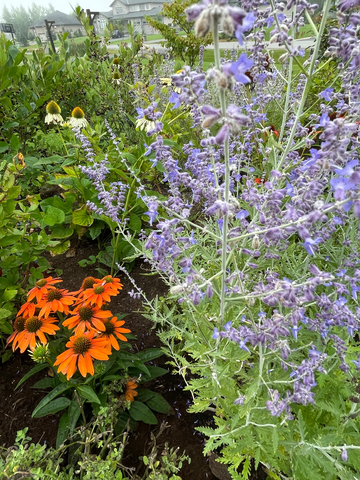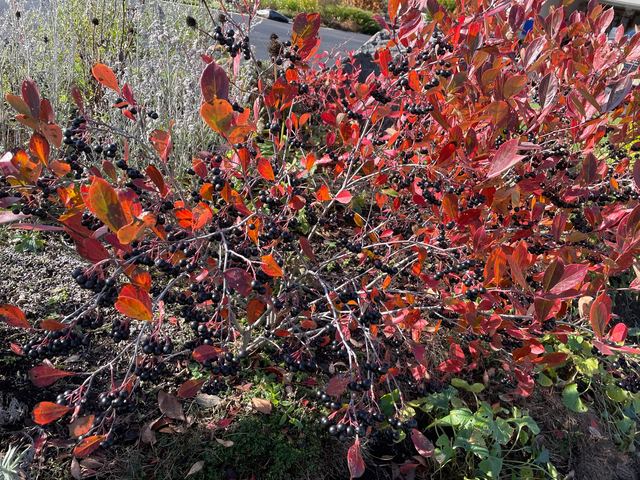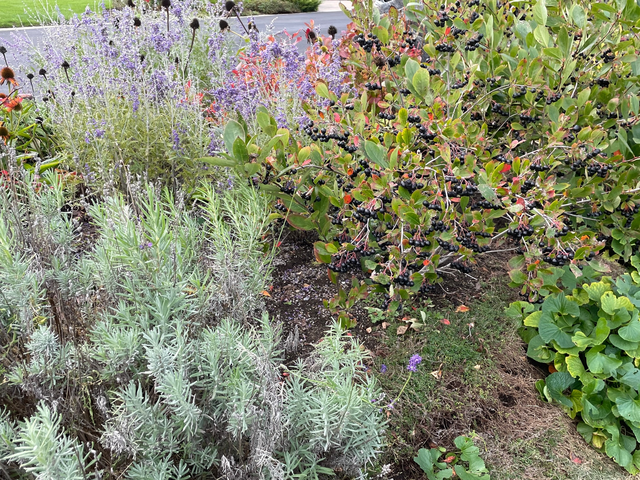Story and photos by Jeanne Currie
I have been gardening for decades, some years more successfully than others. Every fall at the end of the growing season, I sit back and try to figure out what went right or wrong and why. More often than not, if a problem existed it was because I had not selected the right plant for the right place. That is, the plant was not well suited to the location where it had been planted and could not grow, thrive or even survive. Conversely, it might have grown too well and interfered with other plants.

The ‘right plant, right place’ concept is the mantra of many horticultural societies, including the American Horticultural Society and the Royal Horticultural Society in Britain. Plants that require growing conditions similar to what we can offer will have a better chance to perform well. However, a gardener must keep in mind that this may change over time: the right place this year may no longer be the right place in a few years. Although we should always plan for their mature size, plants might eventually outgrow their location, or their performance might decline. Even the most carefully planned garden will need adjustments over the years.
The ‘right plant, right place’ approach starts with the decision to purchase vegetation to accomplish a specific purpose or design. In other words, what do you want that plant to do? Current sky-high food prices might be an incentive to start gardening to feed your family. Or perhaps you wish to promote biodiversity which will attract wildlife and pollinators to your garden. Other goals might be to combat soil erosion, hide an ugly fence, create a privacy screen or simply to beautify your surroundings and experience a sense of well-being.
Along with determining a plant’s purpose comes an evaluation of your growing conditions, consisting, among other things, of your climatic zone and soil quality. Ottawa is rated as 5a and 5b on the Ontario Plant Hardiness Zone Map, something that you should consider when shopping at a garden centre or nursery. An information label will usually specify a plant’s hardiness zone range, as well as its preferred growing requirements as to sun/shade, soil type, moisture level, spacing and general care. Other factors which might impact a gardener’s choice of vegetation are the area’s topography: the presence of paths and traffic areas, hardscaping and other structures, location of water sources, as well as the possible exposure to pollution. Is the location exposed to possible extreme weather conditions or is it a micro-climate?
Next, decisions have to be made regarding plant species and varieties. Should all the plants be native? Could some be non-native? Perennial,
biennial, annual? Tree, shrub, grass or ground cover? Colour, texture, longevity, form, growth habit and whether it is aggressive are additional factors to consider before making a final decision. Whether the selection of plant material for a design is done by consulting seed catalogues or going to a nursery, the beautiful photos or pretty displays of plants in full bloom may fool you into thinking that it can be grown to look the same way in our home gardens.
Four Quick Tips
1. Do get thoroughly acquainted with your garden. Observe the location, quantity and quality of the elements that could impact your growing conditions, such as sunlight hours and shade, type of soil, moisture levels, micro-climates, and possible exposure to extreme temperatures or wind.
2. Do not be tempted by beauty alone. Only choose plants that are suited to growing in the conditions that your garden provides. Check the mature size.
3. Do not be afraid to move plants to a new location if they’re underperforming or completely overtaking a gardening space at the expense of other plants. Find a location that offers more of their preferred growing conditions and your plants will be a lot happier.
4. If you’re uncertain about your plant choice, ask questions of other, more experienced, gardeners. You can also send your questions to the Master Gardeners of Ottawa-Carleton email helpline at mgoc_helpline@yahoo.ca.
That’s why it’s important to find a plant supplier, preferably local, who is experienced and reliable, who can answer your questions from basic to more complex. For example, will the chosen plant impact the environment and, if so, in what way? How will this plant function within a particular ecosystem such as a rain or rock garden? What plant variety within a particular species is best for this hardiness zone? What soil amendments, if any, are necessary? A good supplier should also be able to discuss organic options for fertilization and disease/pest control.

I have made gardening mistakes in the past because I have failed to follow my own ‘right plant, right place’ advice. For instance, recently, wanting to have edibles mixed into my flowerbeds, I planted cherry tomatoes amongst my annual cosmos (Cosmos bipinnatus). Food for me and food for the pollinators, I thought. Well, it was a horrible mess! The tomatoes grew and grew, leaning on the delicate cosmos plants and eventually uprooting them. That was an example of not putting the right
plant in the right place.
Another time, I wanted an orange and purplish/ blue colour theme in one of my flowerbeds. So I went to the local nursery and impulsively purchased nine one-gallon pots of common orange daylilies (Hemerocallis fulva) that were on sale and planted them amongst my Russian sage (Salvia yangii, previously Perovskia atriplicifolia), May night sage (Salvia x sylvestris ‘May Night’), and English lavender (Lavandula angustifolia ‘Hidcote Blue’).

It certainly looked beautiful the first year. By the second year, the daylilies had spread so much, I knew I had a big problem on my hands! In the third summer, the daylilies had completely taken over the flowerbed and even spread into the lawn. I had to dig up all of the plants and get rid of about two cubic metres of soil to make sure not a single bit of rhizome was left. Common orange daylilies, also known as ditch lilies, are great as erosion control on a steep hill, but are terribly invasive in home gardens. That, too, is an example of not putting the right plant in the right place.
My best example of ‘right plant, right place’ is my five black chokeberry (Aronia melanocarpa ‘Autumn Magic’) shrubs. These compact, multi-stemmed shrubs have dark green leaves, showy white flowers in the spring, glossy edible black berries in late summer, and red and purple fall colours. I planted these shrubs in full sunlight in a well-drained flowerbed that provided ample growing space. They were pruned regularly at the end of winter, fertilized lightly in spring, and the suckers were removed as needed. These shrubs are growing extremely well. They are beautiful in all seasons and provide my family and wildlife friends with over 35 pounds of food in a year.
Jeanne Currie is a retired university administrator and researcher who is kept busy with a myriad of interests and activities that includes volunteering for the Master Gardeners of Ottawa-Carleton.






